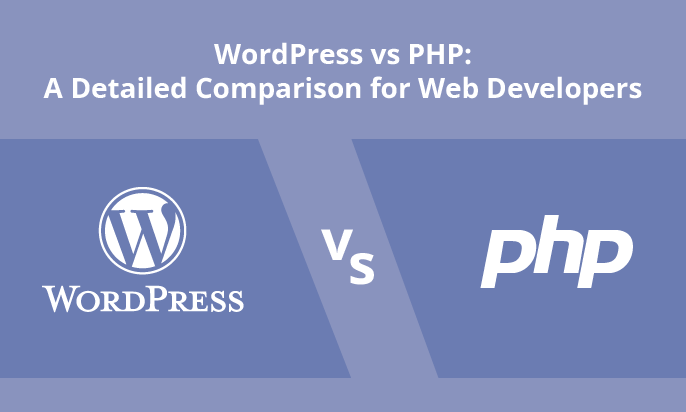In JavaScript, arrays are an essential data structure that allows you to store and access multiple values in a single variable. Whether you are a beginner or an experienced developer, understanding how to declare arrays in JavaScript is crucial for creating efficient and powerful code.
In this article, we will guide you through the process of declaring arrays in JavaScript, providing you with the necessary knowledge and skills to confidently work with arrays in your code.
Key Takeaways:
- To declare an array in JavaScript, you can use the square brackets [] or the array constructor new Array().
- Arrays can store any type of data, including numbers, strings, objects, and even other arrays.
- You can declare an empty array or initialize it with values upon declaration.
- JavaScript allows you to create multidimensional arrays, which are arrays that contain other arrays.
- Be aware of common mistakes when declaring arrays and use built-in array properties and methods to manipulate and access array elements.
What is an Array?
Before we dive into declaring arrays in JavaScript, it’s essential to understand what an array is. In simple terms, an array is a data structure that allows you to store multiple values in a single variable.
An array is a collection of elements, where each element has a unique index representing its position in the array. These elements can be of any data type, such as numbers, strings, objects, or even other arrays.
Arrays provide a convenient way to organize and access data. They allow you to efficiently store and retrieve multiple values without the need for separate variables. This makes arrays particularly useful when working with large sets of data.
Arrays in JavaScript are incredibly flexible. They can dynamically grow or shrink in size, allowing you to add or remove elements as needed. You can also perform various operations on arrays, such as sorting, searching, and iterating over their elements.
“Arrays are the building blocks of many programming tasks. They provide a powerful tool for storing, organizing, and manipulating data in JavaScript.”
Syntax for Declaring Arrays
When working with JavaScript, it is essential to understand the syntax for declaring arrays. The process involves creating a specific code structure that allows you to define an array and assign values to its elements. By mastering this syntax, you’ll be able to effectively utilize arrays in your JavaScript code.
To declare an array in JavaScript, follow this syntax:
var arrayName = [element1, element2, element3];
In the above syntax, var declares a variable, arrayName is the name of the array (you can choose any name you prefer), and the elements enclosed in square brackets [ ] represent the values you want to assign to the array.
Here is an example of declaring an array named fruits with three elements:
var fruits = ['apple', 'banana', 'orange'];
In this example, fruits is the name of the array, and the elements are strings representing different types of fruits.
You can also declare an array with different data types:
var mixedArray = ['apple', 123, true, 'orange'];
In this case, mixedArray is an array that contains a string, a number, a boolean, and another string.
It’s important to note that arrays in JavaScript are zero-based, meaning that the index of the first element is 0, the second element is 1, and so on. You can access individual elements of an array using their index. For example, to access the first element of the fruits array, you would use fruits[0].
Now that you understand the syntax for declaring arrays in JavaScript, let’s explore further concepts related to arrays and discover their practical applications in JavaScript coding.
Declaring an Empty Array
Sometimes, when working with JavaScript, you may come across situations where you need to create an empty array and later populate it with values. Fortunately, declaring an empty array in JavaScript is a straightforward process.
To declare an empty array, you can simply use empty square brackets ([]), like this:
var myArray = [];
By assigning an empty array to a variable, you create a container that can hold multiple values. This allows you to dynamically add or remove elements as needed.
Declaring an empty array can be useful in various scenarios, such as when you need to fetch data from an external source or when you want to build an array gradually by pushing values into it during the execution of your JavaScript code.
Initializing an Array with Values
If you already know the values you want to store in an array, you can easily initialize it with those values right at the declaration. This allows you to save time and streamline your coding process. In this section, we will explore the syntax for initializing an array with values in JavaScript, along with some examples to help solidify your understanding.
To initialize an array with values in JavaScript, you need to enclose the values within square brackets ([]). Each value is separated by a comma. Here’s the basic syntax:
let arrayName = [value1, value2, value3, ...];
Let’s take a look at an example:
let fruits = ['apple', 'banana', 'orange'];
In this example, we have initialized an array called “fruits” with three values: ‘apple’, ‘banana’, and ‘orange’. Now, you can access these values using their respective indexes.
It’s important to note that you can also include different data types in an array. For example:
let mixedArray = [1, 'apple', true, 3.14];
In this case, the array “mixedArray” contains a mix of number, string, boolean, and floating-point values.
Now that you understand the syntax, take some time to practice initializing arrays with different values. This will help you become comfortable with the process and enable you to leverage arrays effectively in your JavaScript code.
| Index | Value |
|---|---|
| 0 | ‘apple’ |
| 1 | ‘banana’ |
| 2 | ‘orange’ |
Declaring Multidimensional Arrays
In JavaScript, you have the ability to declare multidimensional arrays, which are arrays that contain other arrays. This opens up a whole new realm of possibilities for organizing and manipulating complex data in your code.
To declare a multidimensional array, you simply nest arrays within arrays. Each level represents a different dimension, allowing you to create structures that can hold multiple values in a structured way.
Here’s an example of how you can declare a two-dimensional array in JavaScript:
// Declare a 2D array var matrix = [[1, 2, 3], [4, 5, 6], [7, 8, 9]];
In this example, the variable matrix is a two-dimensional array that contains three nested arrays, each representing a row in the matrix. The values within the nested arrays represent the elements of each row.
Accessing Values in a Multidimensional Array
Once you have declared a multidimensional array, you can access and manipulate its values using a combination of index values. The first index specifies the row, and the second index specifies the column.
Take a look at the example below:
// Access a value in the matrix var value = matrix[1][2]; // This will retrieve the value 6
In this example, matrix[1][2] retrieves the value 6. The first index, 1, specifies the second row, and the second index, 2, specifies the third column.
Working with Multidimensional Arrays
Multidimensional arrays can be powerful tools for solving complex programming problems. They can be used to represent grids, matrices, or any other hierarchical structures.
With multidimensional arrays, you can perform operations such as sorting, searching, and filtering based on multiple dimensions. You can also use loops and conditionals to iterate over the elements of a multidimensional array and perform actions on them.
Here’s a practical example of a multidimensional array representing a student roster:
| Student | Math Grade | Science Grade | English Grade |
|---|---|---|---|
| Alice | 90 | 95 | 88 |
| Bob | 85 | 92 | 94 |
| Charlie | 92 | 88 | 90 |
| Danielle | 88 | 90 | 92 |
With this multidimensional array, you can perform various analyses, such as finding the average grade for each student or identifying the highest-scoring student in a particular subject.
By utilizing multidimensional arrays, you can effectively organize and manipulate data in your JavaScript code, making it more efficient and expressive.
Common Mistakes to Avoid
When declaring arrays in JavaScript, it’s important to be aware of common mistakes that developers often make. By understanding these mistakes and knowing how to avoid them, you can ensure that your code functions correctly. Let’s take a look at the most common errors to watch out for when declaring arrays in JavaScript:
- Forgetting to declare the array: One of the simplest yet most common mistakes is forgetting to declare the array before using it. Without declaring the array, JavaScript will throw an error.
- Mixing up array indexes: Another common mistake is mixing up array indexes, especially when working with multidimensional arrays. It’s essential to keep track of the correct indexes to avoid accessing the wrong element or causing unexpected behavior.
- Using incorrect syntax: Incorrect syntax can lead to syntax errors and prevent your code from running. Make sure to double-check your syntax when declaring arrays to avoid such mistakes.
- Not initializing the array: If you don’t properly initialize the array with values, it might contain undefined elements, leading to unintended results when you try to access or manipulate the array later on.
- Overwriting or reassigning the array: Be careful not to accidentally overwrite or reassign the array with a different value or type. This can result in losing the original array and potentially cause bugs in your code.
By being aware of these common mistakes and implementing best practices for declaring arrays in JavaScript, you can save time and avoid unnecessary errors in your code.
“The real voyage of discovery consists not in seeking new lands, but in seeing with new eyes.” – Marcel Proust
Now that you are familiar with the common mistakes to avoid, let’s move on to exploring the properties and methods that JavaScript provides for working with arrays. This knowledge will further empower you to harness the full potential of arrays in your JavaScript code.
| Error | Description |
|---|---|
| Forgetting to declare the array | Attempting to use an array without declaring it |
| Mixing up array indexes | Accessing or manipulating the wrong element of an array |
| Using incorrect syntax | Invalid or improper syntax when declaring an array |
| Not initializing the array | Failing to assign values to the elements of an array |
| Overwriting or reassigning the array | Accidentally replacing the original array with a different value or type |
Array Properties and Methods
In addition to declaring arrays, JavaScript provides several built-in properties and methods that you can use to manipulate and access array elements. These properties and methods offer a wide range of functionality to enhance your array manipulation capabilities in JavaScript.
Array Properties
When working with arrays in JavaScript, you can utilize various properties to gather useful information. Here are some commonly used array properties:
| Property | Description |
|---|---|
| length | Returns the number of elements in an array. |
| constructor | Returns the function that created the array’s prototype. |
Array Methods
JavaScript also provides a set of powerful methods that allow you to manipulate, transform, and operate on arrays. Here are some commonly used array methods:
push(): Adds one or more elements to the end of an array.pop(): Removes and returns the last element of an array.concat(): Joins two or more arrays and returns a new array.indexOf(): Returns the first occurrence of a specified element in an array.slice(): Returns a new array containing a portion of the original array.
Note: This is just a small selection of the many properties and methods available for working with arrays in JavaScript. Understanding these fundamental properties and methods will provide you with a solid foundation for building more complex array manipulations in your code.
Working with Array Length and Index
When working with arrays in JavaScript, understanding how to manipulate the array length and access specific elements using their indexes is essential. In this section, we will explore the various techniques for retrieving the length of an array and accessing its elements based on their indexes.
Retrieving Array Length
To determine the length of an array, you can use the .length property. This property returns the total number of elements in the array, allowing you to dynamically adjust your code based on the array’s size. Here’s an example:
let fruits = ['apple', 'banana', 'orange'];
console.log(fruits.length); // Output: 3
In the example above, the fruits array consists of three elements. By accessing the .length property, we obtain the value 3, indicating the number of elements in the array.
Accessing Array Elements by Index
Each element in an array is assigned a unique index, starting from zero for the first element. To access a specific element, you can use its corresponding index within square brackets. Let’s look at an example:
let colors = ['red', 'green', 'blue'];
console.log(colors[1]); // Output: green
In the example above, the colors array contains three elements. By accessing colors[1], we retrieve the element at index 1, which is 'green'.
It’s important to note that array indexes are zero-based, meaning the first element is at index 0, the second element at index 1, and so on. Be cautious when accessing elements to avoid going beyond the array’s bounds.
You can also use the array length property to dynamically iterate over the array using a loop. By comparing the loop counter to the array length, you ensure that all elements are accessed without exceeding the array’s bounds.
Summary
In this section, we explored the importance of working with array length and indexes in JavaScript. We learned how to retrieve the array length using the .length property and accessed specific elements by their indexes. Understanding these concepts allows you to effectively manipulate and utilize arrays in your JavaScript code.
Conclusion
In conclusion, this comprehensive guide has equipped you with the knowledge and skills to confidently declare arrays in JavaScript. By understanding the syntax and concepts behind declaring arrays, you now have the power to create organized and efficient code.
Arrays play a vital role in JavaScript programming, allowing you to store and manipulate multiple values within a single variable. Whether you need to store a list of names, a series of numbers, or even complex data structures, arrays provide the flexibility and functionality you need.
By mastering the art of declaring arrays, you open up endless possibilities for creating dynamic web applications and solving complex programming challenges. Remember to consider the array length and index, and to avoid common mistakes when working with arrays to ensure optimal code execution.
Now that you have a solid foundation in declaring arrays in JavaScript, continue exploring the array properties and methods at your disposal. Enhance your coding skills, improve efficiency, and unlock the full potential of array manipulation in your JavaScript projects.
FAQ
How do you declare an array in JavaScript?
To declare an array in JavaScript, use the following syntax: `var arrayName = [];`. Make sure to replace ‘arrayName’ with the desired name for your array.
What is an array?
An array is a data structure in JavaScript that allows you to store multiple values in a single variable. It is used to organize and manipulate collections of related data.
What is the syntax for declaring arrays in JavaScript?
The syntax for declaring arrays in JavaScript is `var arrayName = [value1, value2, value3];`, where `arrayName` is the name you assign to the array and `value1`, `value2`, `value3`, etc., are the values you want to store in the array.
How do you declare an empty array in JavaScript?
To declare an empty array in JavaScript, you can use the following syntax: `var arrayName = [];`. This creates an array with no initial values stored in it.
How do you initialize an array with values in JavaScript?
To initialize an array with values in JavaScript, use the following syntax: `var arrayName = [value1, value2, value3];`, where `value1`, `value2`, `value3`, etc., are the values you want to assign to the array elements.
How do you declare multidimensional arrays in JavaScript?
JavaScript allows you to create multidimensional arrays by nesting one or more arrays within another. To declare a multidimensional array, you can use the following syntax: `var arrayName = [[value1, value2], [value3, value4]];`, where `value1`, `value2`, `value3`, `value4`, etc., are the values you want to store in the array.
What are some common mistakes to avoid when declaring arrays in JavaScript?
Some common mistakes to avoid when declaring arrays in JavaScript include: – Forgetting to use square brackets [] to declare an array. – Assigning values to non-existent array indexes. – Overwriting or reassigning the entire array instead of modifying specific elements. – Accessing array elements using incorrect indexes.
What are some array properties and methods in JavaScript?
JavaScript provides several built-in properties and methods for working with arrays, such as: – `length`: returns the number of elements in an array. – `push()`: adds one or more elements to the end of an array. – `pop()`: removes the last element from an array. – `join()`: converts the elements of an array into a string, separated by a specified delimiter.
How do you work with array length and index in JavaScript?
To retrieve the length of an array in JavaScript, use the `length` property, like this: `var arrayLength = arrayName.length;`. To access specific elements in an array, use their indexes, starting from 0. For example, to access the first element, use `arrayName[0]`.
What have we covered in this guide?
In this comprehensive guide, we have covered the fundamentals of declaring arrays in JavaScript. You have learned how to create arrays, assign values to them, declare multidimensional arrays, avoid common mistakes, and work with array properties and methods. By mastering these concepts, you can enhance your coding skills and leverage the power of arrays in your JavaScript programs.





